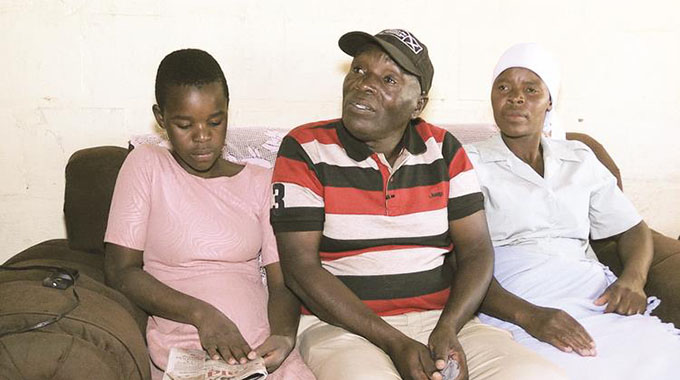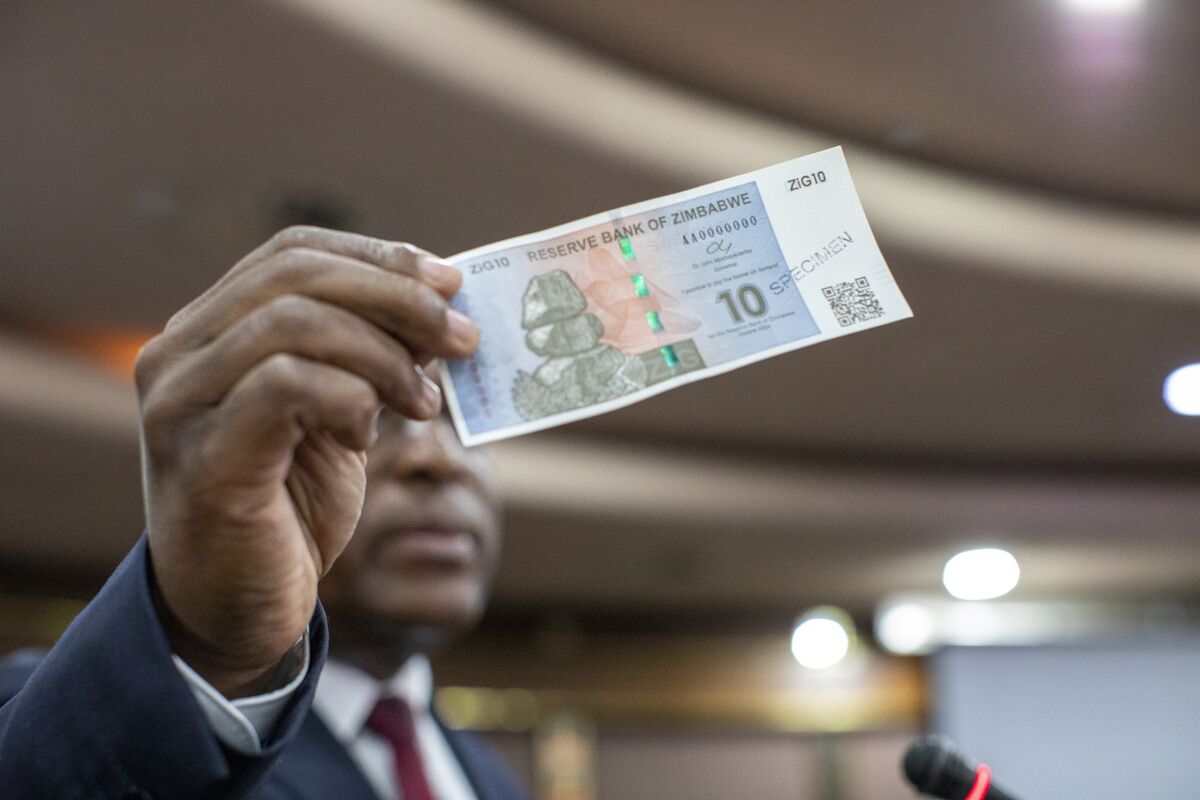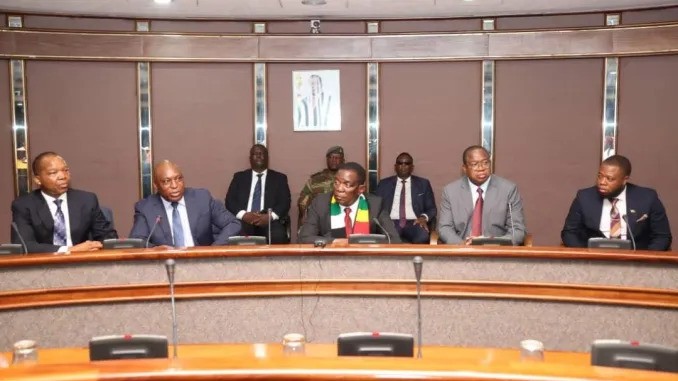by Phyllis Kachere

There is an Associated Press Television News (APTN) video clip played repeatedly by the national broadcaster, ZBC TV, during Independence and Heroes Day commemorations.
What captures the imagination of many in the clip is a young, charismatic but fiery combatant who interrupts General Rex Nhongo aka Solomon Mujuru’s address.
Gen Nhongo was explaining and briefing the fighters on the modalities of the ceasefire, particularly the fact that they had to co-exist with their erstwhile foes, Rhodesian Army soldiers, in the same assembly points.
Defying all odds, considering the high rank held by Gen Nhongo, the young fighter stands up from the crowd, brandishes his gun, chants ZANU slogans and breaks into a revolutionary song.
Simmering tensions at that gathering are laid bare as the young fighter emerges from the crowd in a manner that exhibited utmost displeasure at the arrangements that were being relayed to them by Gen Nhongo.
Well, this was early 1980 and thousands of Zanla combatants had gathered at the now Tongogara Refugee Camp in Chipinge, to hear modalities of the ceasefire agreement from their commander Gen Nhongo.
Zanla forces were still mourning their legendary commander, General Josiah Magama Tongogara, who had just died.
Gen Nhongo had visited the camp alongside the British Military Advisory Training Team (BMATT) and the Rhodesian Army’s General Peter Walls.
Do not miss today’s The Herald Newspaper in which Cde Christopher Makwambeni aka Cde Chapwititi Chehondo gives his account of developments in Assembly Points during the ceasefire period in 1979.
Posted by The Herald-Zimbabwe on Thursday, 23 April 2020
After what appeared to be an unsatisfactory explanation by Gen Nhongo, which was followed by tough questions from the liberation war fighters, moments of silence follow and out of the blue, springs out this armed 19-year-old combatant from the crowd chanting slogans:
“Pamberi nekubatana! Viva Zanu! Viva Zanu! Viva Zanu! Abasha Muzorewa! Abasha Muzorewa!”
The crowd spontaneously responds to the slogans and the young fighter breaks into a song, sending his comrades into a frenzy to the chagrin of the BMATT officials and Gen Walls who all look perturbed.
“Hondo, hondo, hondo kuManica!
“Aaahh yeaa yeaah aheeee, aheee yea ahehee,
“Chengeta Zimbabwe yababa ine madhora
“Hondo kuGaza!
“Aaahh, yeee aheee, Aheee yeee yee
“Aheheee, chengeta Zimbabwe yababa ine madhora!”
Of course, the comrades later agreed to abide by the ceasefire arrangements with elections being held in February, 1980 and ZANU, led by the now late Cde Robert Mugabe emerging victorious.
Many have been wondering who this daring cadre is and if at all he was still alive.


Cde Makwambeni stresses a point during a recent interview
Following a tip-off from some ex-freedom fighters that the man was still alive, The Herald fished through the Facebook debris for Christopher Makwambeni and stumbled on an older image of profile that looked like the older version of the fiery Tongogara Camp young fighter.
Upon further inquiry, it emerged that indeed the Facebook character was the man himself.
The Herald then tracked Cde Munosiyani Christopher Makwambeni, whose Chimurenga name was Cde Chapwititi Chehondo, to his humble “base” in Zengeza, Chitungwiza.
Born in 1960 and bred in Chipinge, Cde Chapwititi is still as revolutionary and patriotic as ever!
He said in the video, Gen Nhongo was explaining modalities of the ceasefire and how the combatants were expected to go into assembly points.
“When Cde Nhongo was explaining, another combatant, Cde Maendaenda (now late) asked him if it meant that we were to go and stay with the white Rhodesian soldiers, who were our foes,” he said.
“He gave his now famous analogy of how when courting a girl, one does not rush to caress her, but takes time to gain her confidence.
“Some comrades, including myself, were not convinced as we thought he was not being serious. We were uncomfortable with the presence of the BMATT members. Remember, our commander (General Josiah) Tongogara had just died in December 1979, and we had the case of SWAPO where guerrillas had been butchered in almost similar circumstances, having been told there was a ceasefire, only for the enemy to trick and kill them.
“We also had experiences of Morrison Nyathi and Ndabaningi Sithole having sold out. At that moment, everyone among us wondered whether or not Nhongo had not sold us out.”
Cde Chapwititi said at that time he was sectional political commissar and as he charged into the centre, his aim was to warn Cde Nhongo, Gen Walls and the BMATT members that they were ready for war and any time guns could be fired.
“When I charged, as you can see in that video, I had my anti-aircraft missile ready to shoot,” he said. “I deliberately brandished it to show them we were not joking.
“The song was very much part of rekindling waning spirits, and that song sought to remind Cde Nhongo that we had to jealously guard Zimbabwe.”
Cde Chapwititi said he assumed his nom de guerre from the dust that gathers up during a Muchongoyo traditional dance.
“I chose that nom de guerre from the dust that gathers up during a Muchongoyo traditional dance on a dry and hot September day,” he said.
“The dust gathers up, and in that dust, one can easily disappear without trace. I would do the same during my combat years.”
Cde Chapwititi left his village for “kumabvazuva”, a code name in his village for guerrilla training in Mozambique, in 1975 when he was only 15.
“My father used to work in the tea plantations in Chipinge as a builder and every time I would see him being humiliated by his white bosses.
“Sometimes he would narrate how he and his fellow black workers were ill-treated. The final straw was when I visited my father at his workplace intending to get school fees. I came face-to-face with his boss’ 12-year-old son kicking my father and scolding him.
“I did not expect that. We had been taught in the village that we do not answer back to our elders, let alone kick and scold them. But here I was, face-to-face with such a humiliating act being meted on my own father. The boy set his dogs on me and I was terribly bitten.”
From that day, he resolved that he would avenge for his father’s humiliation and decided the only way to do so was to cross the border into Mozambique to be trained as a liberation fighter.
“I just wanted to get my gidi (gun) and come back and deal with the white boy and his father,” he said. “That became my motivation even when the chips were down during training.”
The younger Cde Chapwititi was a little cleverer than his peers and it was thus easier for him to earn their respect.
He mobilised three of his friends who included one Cde John Mlambo to cross into Mozambique, about 30 kilometres from his village.
Cde Mlambo is now an officer in the Zimbabwe Prisons and Correctional Services (ZPCS).
“I had earlier told them that we should go and get training,” he said. “In our Grade Six class, only eight of us had remained, the rest had crossed into Mozambique.
“But on this day, a Friday, we first went to the fields to till the land. I hadn’t finished my portion ‘gawu’ and I told them to pack their books because we had to go to school earlier.
“They did so, but halfway, I told them we were not going to school, but were going ‘kumabvazuva’.
“I grabbed our books and hid them in the bush. The journey to Mozambique had begun!”
After walking the whole day and upon crossing Nyangani River into Mozambique, they met a woman who gave them directions and assured them that they were on the right track.
“She also warned us that the Rhodesian forces had intensified border patrols,” he said.
“We crossed into Mozambique and our first port of call was paElliot. This was where all those who intended to go for training assembled for onward transmission to various training bases in Mozambique.”
At Elliot’s stop-over, the numbers swelled to 30 young men and women anxiously waiting to join the war.
Though tired following the day’s walk from home, Cde Chapwititi and 29 other cadres had walk further to Chikwekwete Base, which belonged to Frelimo.
“At Chikwekwete Base, we were welcomed by Frelimo soldiers and we met a group of liberation fighters who had just completed their training, waiting for deployment to the front,” he said.


Cde Makwambeni with his wife Tsverukai Dzitiro (right) and daughter Gracia
One of the trained combatants, said Cde Chapwititi, asked if anyone in their group could sing. And always the cleverer one, he raised his hand and started singing;
“Mhoroi mose aye yee, Makadini, aye yeee, Nerufaro, aye yeee, Tondosanga kuZimbabwe,” rousing the whole camp.
“Every day at home at 8pm, we always listened to Radio Maputo. And it would start the broadcast with a phrase, “Workers and peasants . . . Zimbabwe rise up and fight colonialism.”
Although I could not understand English at the time, I keenly listened and the singing always left me with a strong desire to join the war.”
After the song, Cde Chapwititi said one of the combatants gave him his gun and asked him to have a feel of it.
“That was the most glorious moment I had ever had. To my surprise, the gun was light. It was like a dream come true. All I wanted to do was take the gun and run back to my father’s workplace and gun down all those whites. I pleaded with the combatants to allow me to go to the front with them. I needed to avenge my father’s humiliation. But they calmed me and told me to first go and get training,” he said.
They now numbered around 200 by the time they left for Espungabera.
At Espungabera Base, Cde Chapwititi met the now Commissioner-General of the Zimbabwe Republic Police (ZRP) Godwin Matanga, Cdes Bek, John Jichidza and Pasipanodya who were senior commanders.
He said they spent two weeks at Espungabera where they were screened and assumed their Chimurenga names before proceeding to Chibawawa Transit Camp, which he said was being led by the first Governor of Matabeleland South, Mark Dube, Cde Joshua Misihairambwi and Cde Teurai Ropa Nhongo, now Dr Joice Mujuru.
“At Chibawawa, I was sent to stay at what used to be referred to as kuSecurity, which was headed by Cde Chan Musungwa and Morrison Nyathi who was known for being tough and ruthless. He was later transferred to Nyadzonya.”
It was at Chibawawa that all new recruits would start their training with logs being used as substitutes for guns.
Cdes Casper, Tsotsova and Back would take the recruits on their daily 32km road run, drills and individual tactics training.
Later, Dr Mujuru and the other leaders were elevated and transferred to Nyadzonya and other bases.
“There were lots of difficulties at Chibawawa because of huge numbers. Hunger, disease, lice and all those difficulties that one can think of, were the order of the day. It was common to receive meals once a week. Enterprising as always, I would survive by going out to steal from Mozambicans’ fields. Every day 20-30 people would die. It was survival of the fittest. It was that bad.”
The estimated population at Chibawawa was 40 000. At the end of 1976, Cde Chapwititi went to East Africa for further training.
“Only fit and resilient cadres would qualify to go to East Africa. I had not yet attained the fitness levels that were required but being enterprising, I found myself one day at 2am in a Dim-Dim, the huge military trucks that used to ferry people from the camps to Beira.
“The commanders were loading the fit ones in the Dim Dims and I was woken up by the noise, in confusion I also rushed into a Dim and I quickly joined in the singing; “Ikoko, tondosangana, Ikoko, tondosangana ikoko kuZimbabwe.”
On arrival at Dhondo in Beira, they were split into two groups with some going to Tanzania by air, while others travelled by ship.
He was to travel for three days by sea and arrived in Tanzania where senior leaders like Air Chief Marshal Perrance Shiri (Retired) welcomed them.
From the arrival port, they were taken to Dar es Salaam, then to Dodoma.
They were further split into two groups again with one group being sent to Mgagao while another went to Nachingweya at Farm 5.
“We had the most gruesome and painful training for six months. My group was named the ‘Songambere’, which is kiSwahili for brace up. I was with the likes of Cde Kasikai Patiripakaipa and Cde Maendaenda.”
After six months, Cde Chapwititi said they were never told that they had completed training.
“They only told us we were going to be deployed and we were ferried back to Mozambique, at Chingodzi where we stayed for a week then to Dhondo.
“My first deployment was to Manica Province which covered Mutare, Harare, Buhera and Masvingo.
“With my bazooka, I had to pass through Chipinge with those white people on my mind on my way to Bikita/Zaka where I operated for nine months.
“I was to be recalled to Mozambique, soon after the Battle of Siya as the first combatants to be sent to the newly-opened Gaza Province which included Chiredzi, Triangle, Mzingwane and Matabeleland South.”
Lots of ghastly things happened in the war.
Cde Chapwititi said he lost close colleagues whose major wish was to see the birth of an independent and free country.
He believes his and his comrades’ fight was not in vain as black majority rule was finally attained in 1980.
Cde Chapwititi is now a retired Captain in the Zimbabwe National Army.-herald






